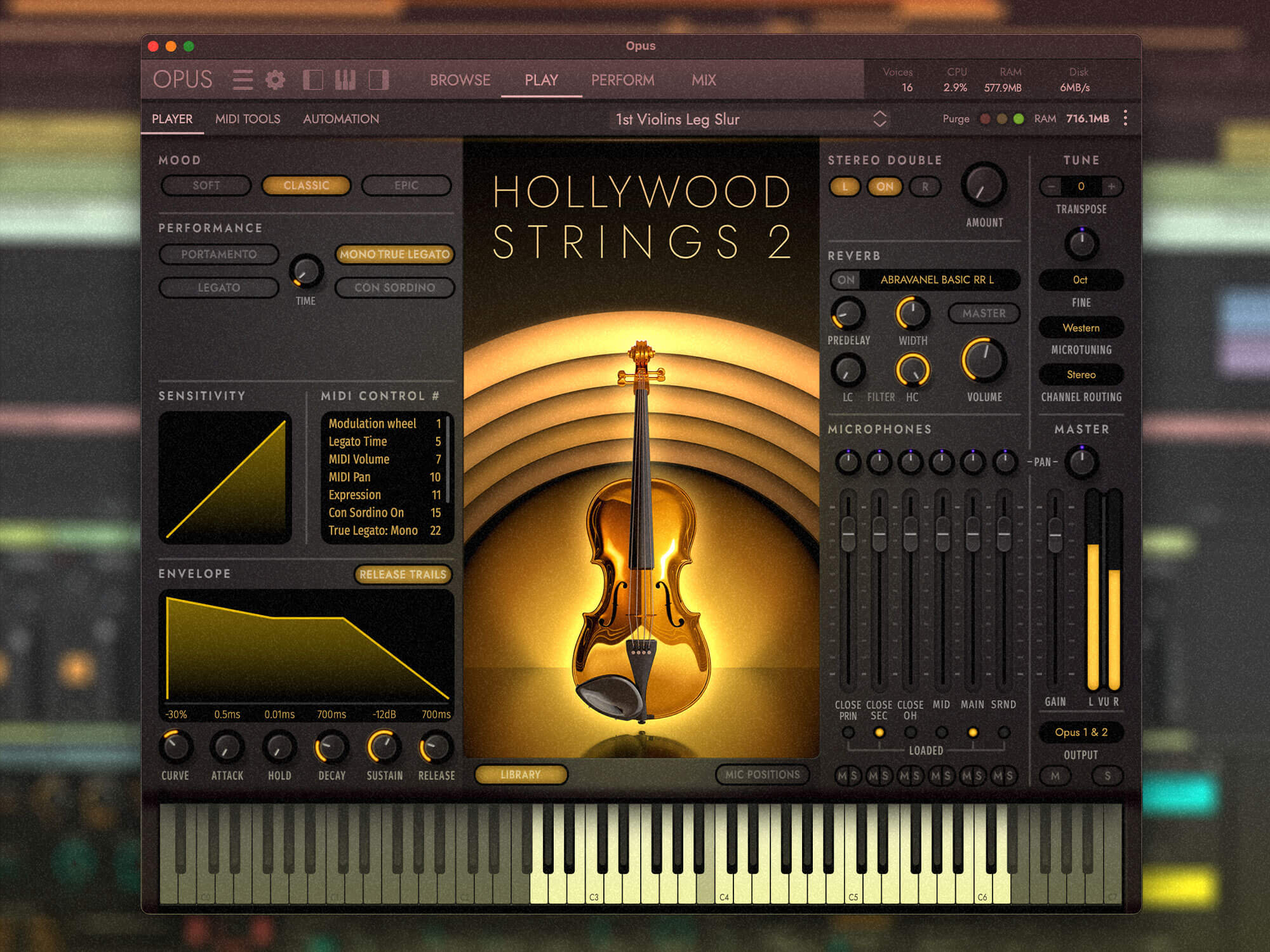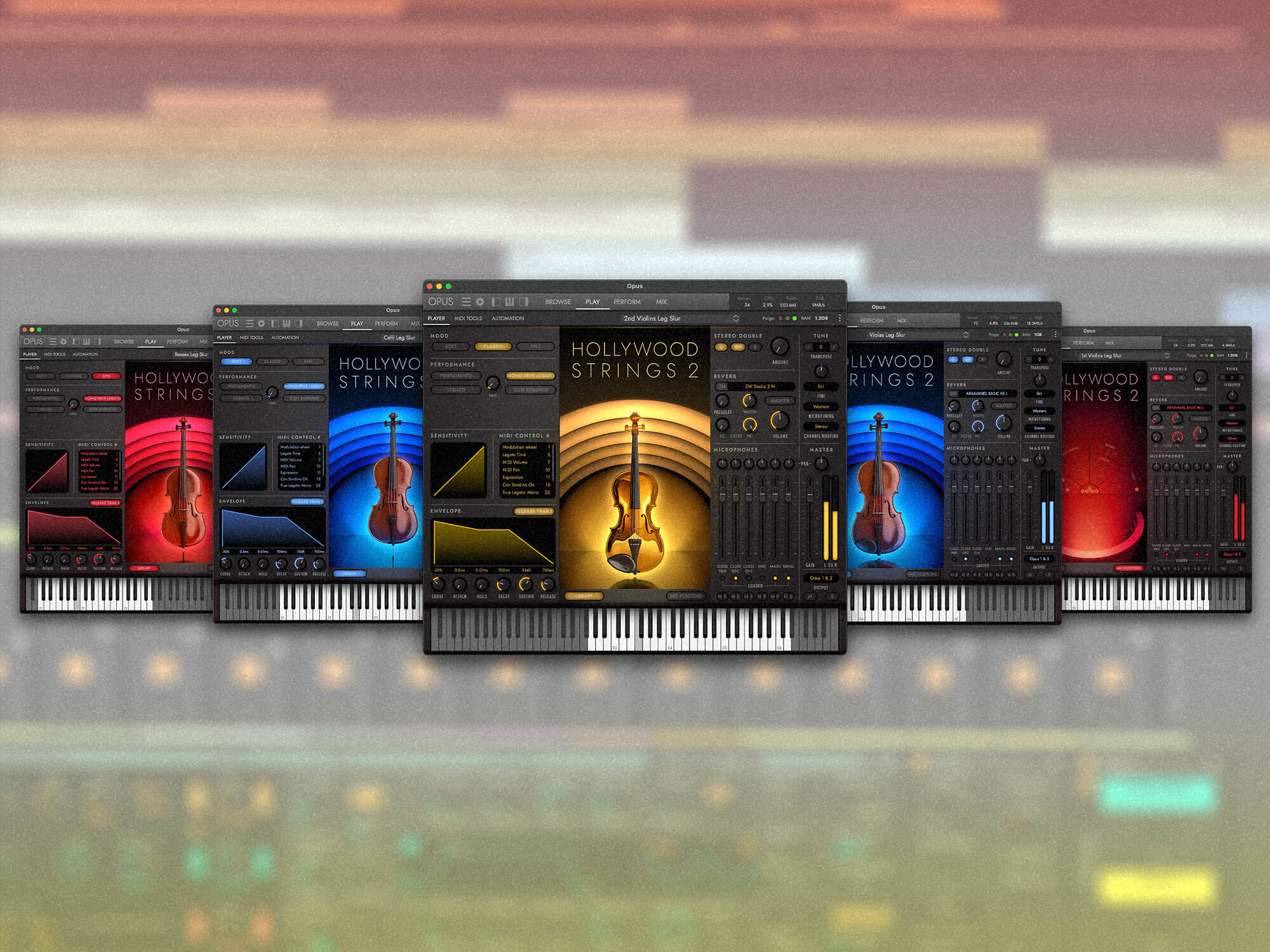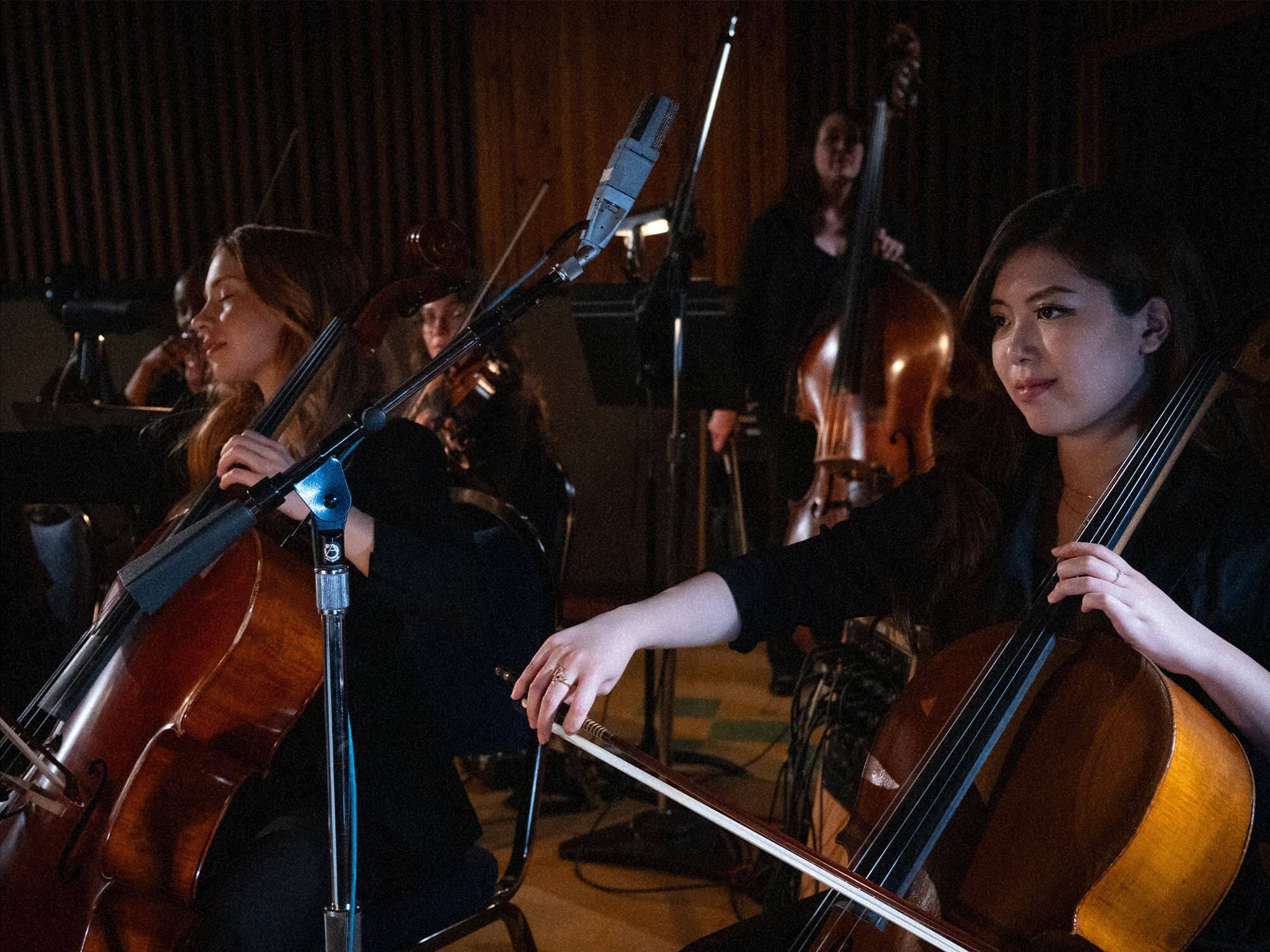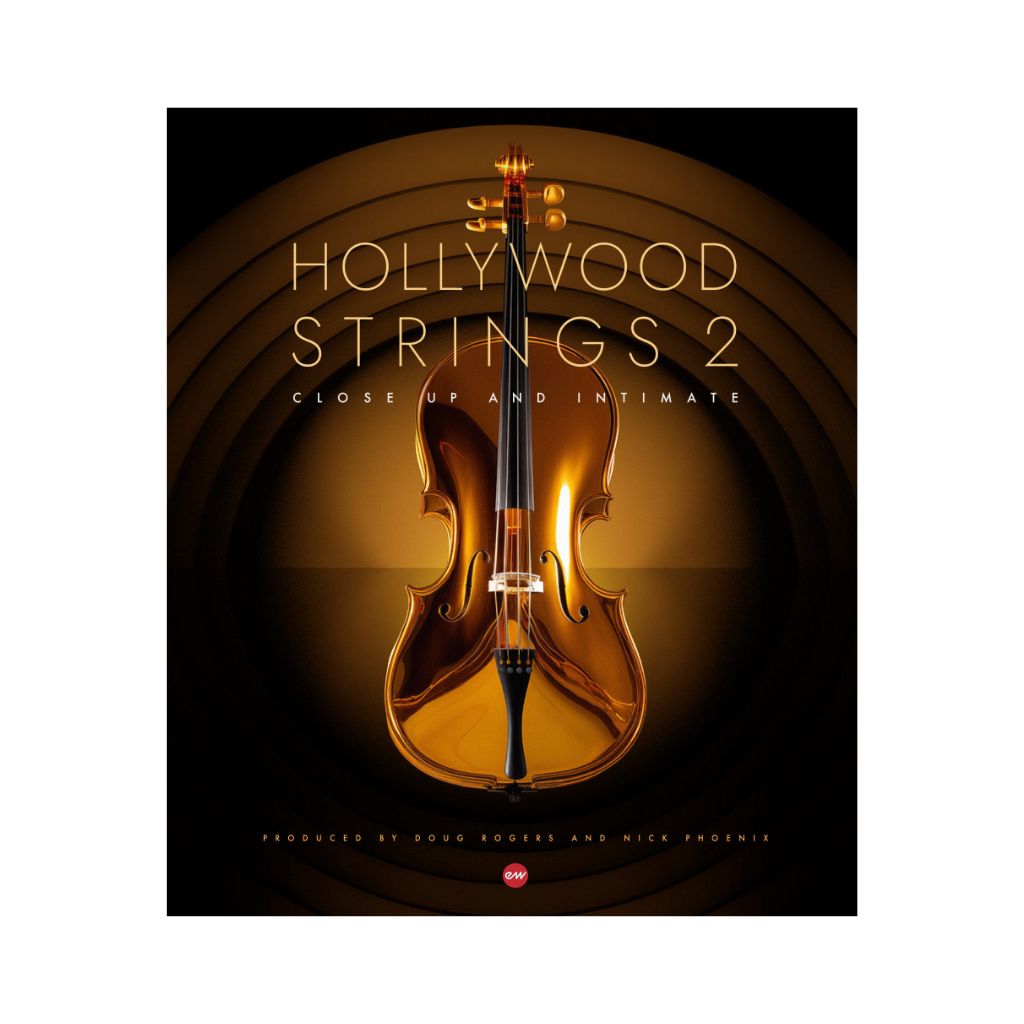
EastWest on how to make a plugin fit for the big screen with Hollywood Strings 2
Off the back of a series of stellar sample library releases, EastWest’s Doug Rogers and Nick Phoenix explain why Hollywood Strings needed a sequel, how they achieved the most detailed sound possible, and why reverb is not always a good thing.
EastWest Sounds Hollywood Strings 2
Ad feature with EastWest Sounds.
Doug Rogers and Nick Phoenix know a thing or two about samples. Over the course of an almost 30-year creative partnership, the pair have raised the bar time and again, releasing wildly popular instruments, racking up industry awards, and pioneering new levels of musical realism.
So, when they say composers need a new orchestral string library, it’s probably worth listening to their reasoning.
EastWest, which Rogers founded in 1988, already offers two comprehensive, award-winning orchestral libraries: Symphonic Orchestra, and Hollywood Orchestra Opus Edition. Hell, it also offers a fantasy-focused orchestral library that won this year’s prestigious NAMM TEC award for best musical instrument software. Still, they say, something was missing.
“I wanted a drier, closer, ‘in your face’ sound,” says Rogers, who takes the lead on shaping the sonic identity of EastWest’s libraries. “I wanted something where you’re actually in the sound of the instrument.”
That desire has culminated in Hollywood Strings 2 — a library that dispenses with standard string recording techniques and instead prioritises dry, intimate, meticulous samples. The results speak for themselves, with a hyper-focused string sound that sizzles on the ear drums. As Phoenix puts it: “I think this library takes it up to another notch, like you haven’t seen before.”
Considering that Rogers and Phoenix have access to some of the best-sounding rooms in the world, it might seem counterintuitive to record a string orchestra with minimal reverb. But, as Rogers points out, while luscious natural acoustics may sound great, they lock you into a specific type of scoring and mixing. “If you’re doing horror films, then you don’t want any room ambience, you don’t want that big Star Wars sound.
“Typically,” he continues, “When you’re recording orchestral instruments, you want the sound to merge with the acoustics of the room. Once you get into a big, 2,500-seat concert hall, like we did with Symphonic Orchestra, it’s a 50/50 combination of the instrument and the hall. We absolutely did not want that here.”

Seeing the need for a more versatile string library, the pair eschewed the instantly recognisable resonance of EastWest’s Studio One, and instead opted for the much smaller, and drier, Studio Two. “It’s a little unusual,” admits Rogers, “Studio Two is the rock room at EastWest.”
And not just any rock room, Studio Two has been home to bands like Red Hot Chilli Peppers, Weezer, REM, and Rage Against The Machine. It’s where they recorded some of the most iconic records of the 90s and 2000s. But the room still has pedigree when it comes to string sessions.
“If you look at the history of the studio, this was the room where the Beverly Hillbillies, Green Acres, and Hawaii Five-O soundtracks were done back in the 60s,” Rogers says. “But creating a virtual instrument that has the versatility of a dry room, I think we’re the first to do this in here.”
In Studio Two, they had a room that balanced tight acoustics with a warm tone, but that was only part of the puzzle. The aim was to get samples with such detail that it would feel like your ear was right up against the body of the instrument – something that other sample instrument makers have tried to do but, in Rogers view, none have achieved. “I had looked at other collections that attempted to do this,” he says. “To my ears, they just weren’t close enough.”

“This type of sound really hasn’t been perfected,” agrees Phoenix. “There’s a lot of deficiencies in what’s been attempted in the past.”
The two producers tapped legendary mix engineer Shawn Murphy to help them get the sound they were looking for. With credits including blockbuster films like Titanic, Mission Impossible, Jurassic Park, and the Star Wars franchise, Murphy had built a career perfecting the kind of gigantic orchestral sounds that Rogers and Phoenix were specifically trying to avoid –nonetheless, they felt confident that he was the man for the job.
“He brings to the table an immense amount of experience,” says Rogers. “I said to him, ‘Shawn, I want to do something completely opposite to what you normally try to achieve, I want to be in the sound hole of the instruments’. So, he came up with the idea of putting clip-on DPA mics on all the instruments, and it just sounded incredible.”
To ensure maximum versatility, those super close clip-on DPA’s were backed up by two other close miking options, mid-fields, a classic Decca Tree to add warmth, and surround mics. “The user gets access to all of these different mic positions,” Rogers says. “They can have it literally in the sound hole of the instrument, or they can have a full Dolby Atmos mix, and anything in between.”
Alongside an ultra-focused string sound, and versatile mixing options, Phoenix says it was also essential to ensure the library was satisfying to play and compatible with other collections in EastWest’s sprawling catalogue of sample instruments.
“We’ve learned a lot from our previous ventures into orchestral sampling,” reflects Phoenix. “In this library, there’s a consistency to all the articulations and the sections that makes it a real pleasure to use – and, even though it has a much more intimate sound, it can easily be used alongside things we’ve recorded in Studio One, such as the original Hollywood Strings library.”
Despite that compatibility, when it comes to its purpose Rogers says Hollywood Strings 2 is the “complete opposite” to its predecessor. “It’s designed for horror, romanticism, and total intimacy,” he states. “I think for media and game composers who need strings to provide an atmosphere, but don’t want that bombastic ‘hit every wall’ sound, this is going to be very, very useful.”
By getting up close and personal with the string section, Rogers and Phoenix haven’t just created a beautifully detailed sample instrument — they’ve rounded out EastWest’s orchestral offerings into a one-stop-shop.
“The goal was to fill the missing gap between our Symphonic Orchestra and Hollywood orchestra,” says Rogers. “Now, users are able to do anything they want to do.”
